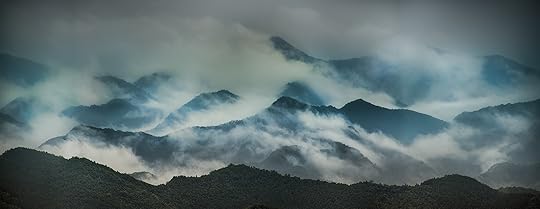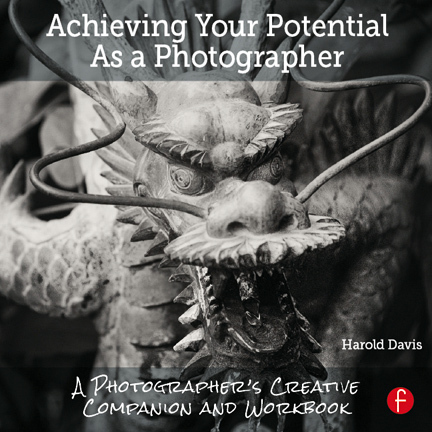Harold Davis's Blog, page 164
February 16, 2015
Bouquet of Anemones
These pretty anemones come from Thomas Farms, and are organic (as well as locally sourced). The potential advantages of eating organic food are pretty clear, but why buy organic cut flowers? According to Thomas Farms, “Most cut flowers available in the U.S. are grown, assembled and packaged in third-world countries, where pesticide regulations are lax. Because flowers are such a high-value crop, they are doused with insecticides, fungicides and growth regulators, including chemicals that have been banned or restricted in the U.S. due to health or environmental concerns.” You can read more on the Thomas Farms website.

Bouquet of Anemones © Harold Davis
This bouquet of anemones was photographed with tender love on my light box for transparency using my Zeiss Otus 55mm f/1.4 lens using a Nikon D810. Click here to see close-ups of a couple of these anemones.
February 14, 2015
Anemone Fun
I am always amazed when I start a flower photography session: no two flowers are ever the same, and there are always an infinitude of possible ways to imagine a flower photo. Once you take up flower photography there is little chance that you will ever be bored.
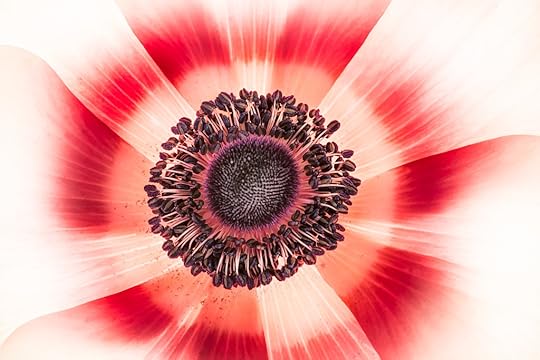
Anemone 1 © Harold Davis
These anemones interested me because they both showed red marking on a fairly white background. I photographed each with my Zeiss Otus 85mm lens, using three bracketed exposures. The darkest exposure was for the outer petals, and the lightest exposure was for the dark—almost black—core of each anemone.

Anemone 2 © Harold Davis
The layer masks I created to combine the exposures bear some resemblance to bullseye targets. Either that, or to Kenneth Noland paintings without the color.
Want to see more of my anemone images? Check out Anemones Redux, Nature’s Palette, Tulips and Anemones, and Anemones.
Click here for the Flower Photography category on my blog.
February 12, 2015
Interview with Rick Smolan
It’s always fun to change things up and do new things, so from time to time on an ongoing basis I will be interviewing prominent photographers and folks involved with publishing on my blog. I’m pleased and honored to kick off this series with a discussion with photographer and well-known book producer Rick Smolan.
Rick Smolan is a former Time, Life, and National Geographic photographer best known as the co-creator of the “Day in the Life” book series. Today, Smolan directs massive crowd sourced projects which combine creative storytelling with state-of-the-art technology. Many of his books have appeared on the New York Times best-seller lists and his projects have been featured on the covers of dozens of publications around the globe including Fortune, Time, GEO and Stern.
The primary focus of my discussion with Rick Smolan relates to his recent Kickstarter funded book project, Inside Tracks.
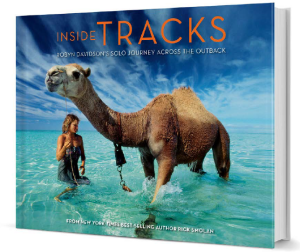
©2015 Rick Smolan via INSIDE TRACKS
HD: Tell me about Inside Tracks.
RS: Inside Tracks is the extraordinary story of Robyn Davidson, a twenty-seven-year-old Australian woman who set off to cross the desolate outback, accompanied only by four camels and a dog. It was a trip that began as a pure and (many said) lunatic gesture of independence and quickly turned into an all-out battle of wits against the forces of both nature and civilization. Cocky and outspoken, Robyn Davidson’s tale is at once the probing journal of a daring and stubborn woman and a wilderness adventure of the most exhilarating sort. It’s also the subject of a stunning new feature film called Tracks from the Oscar winning team behind “The Kings Speech”.
HD: What did you have to do with Robyn’s story?
I was assigned by National Geographic to document her journey, and tracked Robyn down in the desert five times during her nine-month journey. As I photographed the outback of Australia, and tried to see the landscape through Robyn’s eyes, I found an ancient awesome landscape swept by rain, heat and dust and inhabited by all varieties of marauding life, from poisonous snakes and wild bull camels to swarms of tourists clamoring after their newest heroine, the “Camel Lady.”

©2015 Rick Smolan via INSIDE TRACKS
HD: This sounds like a great story. But why revisit it now?
RS: Of all the assignments I shot as a freelance photographer, Robyn’s timeless story has always been the one that seemed to touch people the most deeply. It’s a love story, a dog story, and an epic adventure. The that fact that it has now been turned into a much-loved movie makes it a great time to revisit the original journey and feature images never seen before.

©2015 Rick Smolan via INSIDE TRACKS
Inside Tracks is also quite unique in that it’s one of the first smartphone-enabled coffee table books and combines images from the original story together with images from the movie.
HD: I’d like to get back to the interesting and exciting extended features of your book in a moment. First, please tell me a bit more about the film.
RS: When Robyn and her caravan reached their destination nine months and 2000 miles of outback later, their arrival marked the end of a true odyssey, an unforgettable journey and now an extraordinary film, In the movie, Robyn is portrayed by Mia Wasikowska (from Alice in Wonderland) and I’m (gulp!) played by Adam Driver (in HBO’s series Girls).
Mia Wasikowska and Adam Driver are two of the fastest rising young movie stars. Mia was nominated for her role in TRACKS as Best Actress at the recent Gotham Awards, and Adam will appear in the next Star Wars film.
The filmmakers were incredibly meticulous in casting all the actors to look like the original people (not only Robyn and me, but her father, the aboriginal elder she traveled with, and so on) — they even manufactured clothes to match the ones people wore in my photos. In fact, they built many of the sets based on my still photos and the side-by-side comparisons are fascinating.

©2015 Rick Smolan via INSIDE TRACKS
HD: This must be very exciting for you.
RS: It’s great to have a major movie built around a story I played a role in, and yes, it is a real kick to be played by a major movie star. I think I know how Mark Zuckerberg must feel, minus the ten billion dollars part!
HD: How does your life today compare with the life you were leading when you created the images shown in Inside Tracks?
RS: My life is completely different. When I documented Robyn’s journey, photojournalists were sent out on assignments that sometimes lasted months. I traveled with Robyn for three months during her nine month trip. Today that kind of in-depth coverage is very rare. I was also 28 years old and single at the time, living in hotels 11 months of the year. I was footloose and fancy free. Today I have two wonderful kids (12 and 14) and a brilliant wife plus two dogs and two cats. I travel about half as much as I’d like to and twice as much as my family wants me to!
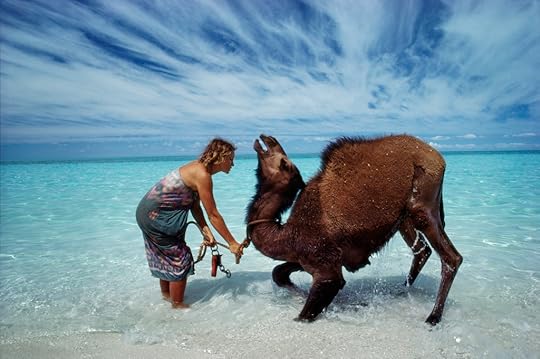
©2015 Rick Smolan via INSIDE TRACKS
HD: Do you miss the Australian outback? Would you go back? Do you enjoy wilderness experiences?
RS: I loved the outback. The quiet, the clarity of the light, the lack of light pollution so you could see stars was unlike anything I’ve ever seen anywhere else. I did go back during the shooting of the movie and it hadn’t changed at all. Just magical!
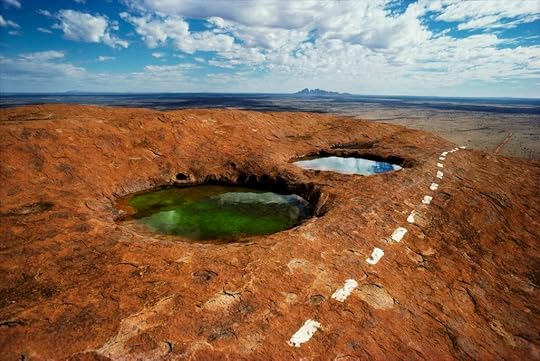
©2015 Rick Smolan via INSIDE TRACKS
HD: If you could do this story over again, what would you do differently?
RS: I wish I had bought a movie camera back then, but was worried I’d be shooting movie footage just when I should have been shooting stills. I didn’t want to risk being distracted. Now I so wish I had shot movie footage anyway.
HD: How does Robyn’s take on this adventure in her book Tracks differ from yours, or are they the same? Same question for the movie, or are there substantive differences?
RS: We compared our very different memories of the trip in this wonderful video produced by Emmy Award winning director Brian Storm. Actually, since human memory can be so malleable, one of our biggest fears is that the movie version of events will begin to change the way both of us remember the actual journey.
HD: You mentioned earlier in this interview that your book has some unusual features. Please tell me more.
RS: The coolest part of this book is that it comes with a free app which allows your iPhone or iPad to recognize one of my original photos of Robyn’s trek, and then immediately play a scene from the movie based on that photo. The effect is reminiscent of the Harry Potter movies where you could tap a character in the newspaper and have them turn around to tell you their story. It allows readers to feel as if they are joining Robyn on her journey (and the actors as they bring her legendary trek to life.)
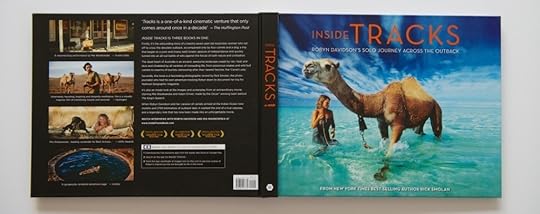
©2015 Rick Smolan via INSIDE TRACKS
HD: I understand that you self-published Inside Tracks via a Kickstarter campaign, even though I’m sure you could have found a conventional publisher to work with. What’s the thinking behind your decision? How do you feel it has turned out?
RS: Even though over the years conventional publishers have sold more than five million copies of my books, I decided to self-publish Inside Tracks via Kickstarter because, despite my track record, no publisher would commit to the size, the heavy matt paper, and to the 6-color printing plus spot varnish that I felt Robyn’s story deserved. The good news is that Inside Tracks has already sold over 11,000 copies, which probably makes Inside Tracks the best-selling Kickstarter coffee table book to date.
HD: Do you have any advice for someone contemplating a Kickstarter, or a self-publishing venture?
RS: Yes, I’m now convinced it’s the only way to go. You have a direct relationship with every backer (unlike when you work with a publisher), and you make much more per book, so you can make the book much more affordable. When a $45 book is sold through a publisher you might make $2. When you sell that same book for $22.50 directly you make $10. So you make as much selling 1,000 copies via Kickstarter at half the price as you would selling 5,000 via a publisher at full retail. Also with a publisher, you need to guess eight months in advance how many copies you “think” will sell, and if you are wrong, you end up with a warehouse full of unsold copies. With Kickstarter, you only print the number of copies that your backers paid for, so there is minimal risk. I think most photography books in the future will be crowd funded.
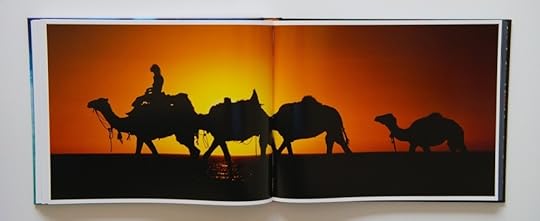
©2015 Rick Smolan via INSIDE TRACKS
HD: What projects are you involved in now, and what are your plans for the future?
RS: My younger brother Sandy and I are just finishing a one hour TV documentary based on our Human Face of Big Data project and I’m working on a dramatic TV series based on Robert Heinlein’s classic science fiction novel “Tunnel in the Sky” (which I own the rights to).
HD: Thanks Rick, it is been really interesting finding out what you’re up to! If someone wants a copy of Inside Tracks, where is the best place to get one?
RS: Your readers can buy Inside Tracks from Amazon.com using this link. And, thank you.

©2015 Rick Smolan via INSIDE TRACKS
February 10, 2015
Wanted: A few good photographers for Italian Photo Tour
Sea-Girt Villages of Italy Photography Adventure with Harold Davis is 15 Days and 14 Nights. The cost is $6,495.00 per person. With a maximum group size of 12, places are limited. So don’t delay. Click here for Prospectus and complete details, and here for Registration instructions.
Download this advertisement as a PDF printable e-card. Click here for Harold Davis 2015 Workshop schedule, and here for the Making Memorable Travel Photos Harold Davis webinar recording.
February 7, 2015
2015 Special Harold Davis Print Offer
From time to time I like to offer my prints at a special price so they are more affordable. This is the first special print offer of 2015. Please take your choice of the three 11″ X 14″prints below for $195.00 each (for your reference, my 11″ X 14″ prints are currently priced at $1,000; click here to see our current print price list).
Each of these images is one of my personal favorites from my recent work. Prints are made with artisinal care in my studio on the paper indicated to go with the image, and each one is personally hand-signed. Click here to learn more about my prints.
If you’d like all three prints to start a “Harold Davis collection” (and for additional savings), the price for all three prints is only $495.00.

Tulips on White © Harold Davis Printed on Moab Lasal Exhibition Luster
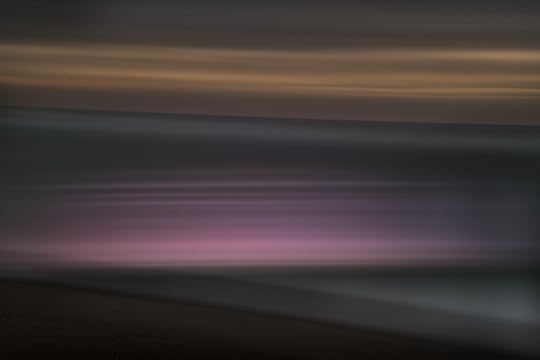
Waves 5 © Harold Davis Printed on Moab Slickrock Metallic Pearl

Lamentation © Harold Davis Printed on Moab Slickrock Silver
Note: Shipping and applicable sales tax (CA residents) additional. A Certificate of Authenticity available on request. We accept credit cards and checks. Please contact my studio to order your print. This offer is good for a limited time only.
February 5, 2015
Night Photography in San Francisco with Harold Davis Workshop Feb 20-22, 2015
Click here for information and registration, and here for a PDF download of this e-Card. Click here for Harold Davis Workshops & Events.
In a letter to his brother Theo, the great artist Vincent van Gogh wrote, “It often seems to me that the night is much more alive and richly colored than the day.” The advent of digital photography has revolutionized the practice of night photography because a digital sensor can record the spectacular colors of the night. These colors are created by light waves in spectrums that are invisible to the naked human eye. For the first time we can truly “see” the world of the night around us.
Night covers the globe half the time and—surprising to many—photographic opportunities with digital equipment are as exciting at night as they are during the day. Join night photographer Harold Davis, the author of Creative Night: Digital Photo Tips & Techniques, a book explaining night photography techniques and 100 Views of the Golden Gate, a book celebrating the visual glories of San Francisco’s iconic structure, as we explore the freedom of the night in the glorious surroundings of San Francisco.
What: Night Photography in San Francisco with Harold Davis
When: Feb 20-22, 2015
Where: Berkeley, CA (classroom sessions); field locations around the San Francisco Bay area
Tuition and registration: $695; click here for registration, information, and detailed curriculum. Note: Registration is by a YES RSVP and Paypal payment on Meetup; if you prefer to register privately simply contact us.
Workshop size: Maximum 12 participants
Field locations: Depend on conditions and group inclinations, may include Berkeley Pier, Oakland Waterfront Park, Mare Island, Marin Headlands, Golden Gate Bridge, Kirby Cover, Lombard Street curves, San Francisco waterfront and Bay Bridge
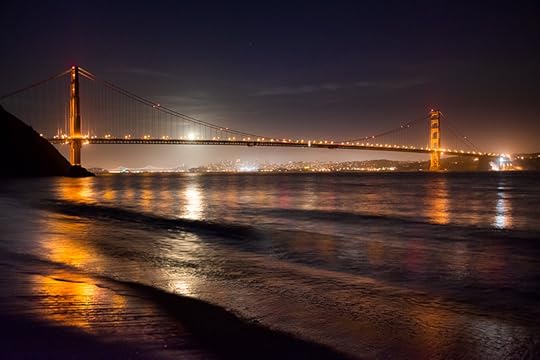
Full Moon Rising © Harold Davis
What folks have said about Harold Davis workshops and events:
“A great artist and speaker!”—W. Anglin
“Harold is genuine, generous, and gracious – He has a world of knowledge and expertise that he loves to share – his wonderful books show his monumental talents and skill set- his workshops shows the depth of his connecting with others in a very real and personal way.”—P. Borrelli
“Awesome! He patiently addressed questions from the audience which contained photographers of all levels , molding his answers to the level of understanding for each of us. His presentations covered a wonderful range of technical knowledge as well as emphasizing the need for images to have an emotional quality. The images he shares are breathtaking and he is generous in sharing many facets of how he captures such beauty.”—J. Phillips
“Not all photographers are good verbal communicators. Harold is someone who can DO and TEACH. A rare combination of talents.”—B. Sawyer
“Inspiring!”
“He was very giving of his talents and time. The course was very organized and thorough. Loved it! Learned so much! … I also wanted to let you know that I have more than paid the cost of the workshops I’ve done with you by selling some photos! I have sold three prints already.”—L. Beck
“Very creative and a marvelous instructor.”—Kay S.
About Harold Davis
Harold Davis is an internationally-known digital artist and award-winning professional photographer. He is the author of many bestselling photography books including The Way of the Digital Photographer (Peachpit Press, awarded as a Top 10 Best 2013 Photography Book of the Year by Photo.net) and Creating HDR Photos (Amphoto). His Photographing Flowers (Focal Press) is a noted photography “classic,” and is rated the Best Guide to Flower Photography by Digital Photographer Magazine.
In addition to his activity as a bestselling book author, Harold Davis is an Adobe Influencer, a Moab Master printmaker and a Zeiss Lens Ambassador. Harold Davis’s work is in collections around the world. It is licensed by art publishers and others, and has appeared in numerous magazines and other publications.
Harold’s black and white prints have been described as “hauntingly beautiful” by Fine Art Printer Magazine, and his floral prints have been called “ethereal,” with “a purity and translucence that borders on spiritual” by Popular Photography.
Recently Harold Davis’s work has been exhibited in venues including Photokina in Cologne, Germany, PhotoPlus Expo in New York, the Gallery Photo in Oakland, California, the Arts & Friends Gallery in Heidelberg, Germany, and the Awagami Gallery in Japan.
Harold Davis has led destination photography workshops to many locations including Paris, France; Spain and Morocco; and the ancient Bristlecone Pines of the eastern Sierra Nevada Mountains in California.
Harold’s popular online course on Craftsy.com, “Photographing Flowers”, has thousands of students. His ongoing photography workshops in partnership with institutions such as Point Reyes Field Seminars, the Center for Photographic Art in Carmel, California, and the Heidelberg Summer School of Photography are continually in demand and popular.
According to Rangefinder Magazine, Harold Davis is “a man of astonishing eclectic skills and accomplishments.”
February 4, 2015
Pre-order Achieving Your Potential as a Photographer
You can now pre-order my new Focal Press book, Achieving Your Potential As a Photographer: A Photographer’s Creative Companion and Workbook. This book is one part inspiration, one part an organized plan for jump starting your creative photography, and one part a distillation of the key things I have learned in my work as an artist and photographer. Exercises and workbook pages are bound into the book, to be used as part of your creative photographic process.
Here’s the book description on Amazon:
Coming from the perspective that true inspiration and great image making are at the core of any high-level photographic endeavor, Achieving Your Potential As a Photographer presents an organized and cohesive plan for kick-starting creativity, and then taking the resulting work into the real world. The ideas presented have been formulated by Harold Davis over many years working as a creative artist and award-wining photographer, and in the celebrated workshops he has developed and led all around the world. These concepts are presented with accompanying exercises so that readers can put them into everyday practice as well as workbook pages bound into the book for note taking and journaling.
Related story: Focal Press sponsored webcast (on YouTube): Achieving Your Potential As a Photographer with Harold Davis.
February 2, 2015
Wanted: A Few Good Photographers
Sea-Girt Villages of Italy Photography Adventure with Harold Davis is 15 Days and 14 Nights. The cost is $6,495.00 per person. With a maximum group size of 12, places are limited. So don’t delay. Click here for Prospectus and complete details, and here for Registration instructions.
Download this advertisement as a PDF printable e-card. Click here for Harold Davis 2015 Workshop schedule, and here for the Making Memorable Travel Photos Harold Davis webinar recording.
February 1, 2015
New Phylum
January 31, 2015
Hekatonkheires
This image, derived from a single in-camera multiple exposure, plays homage to the Hekatonkheires, a race of hundred-handed giants in Greek mythology. In the popular Rick Riordan young adult fantasy The Battle of the Labyrinth, the character Briares is the last of the hundred-handed giants.
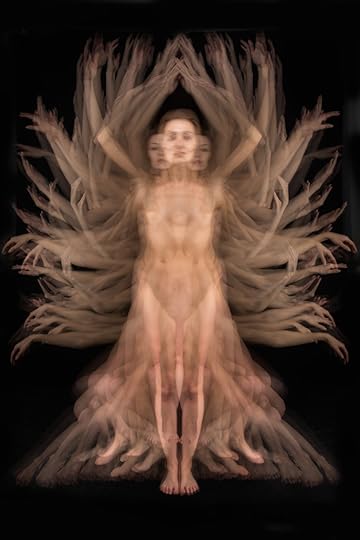
Hekatonkheires © Harold Davis
Related image: Pagan Goddess.



